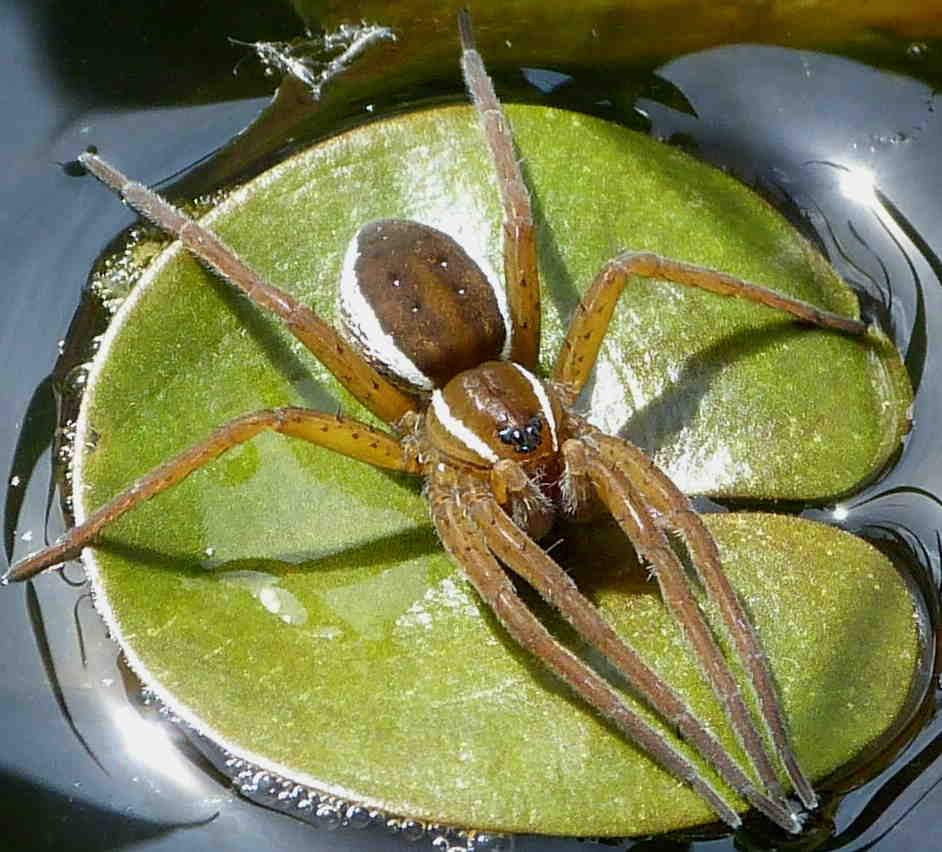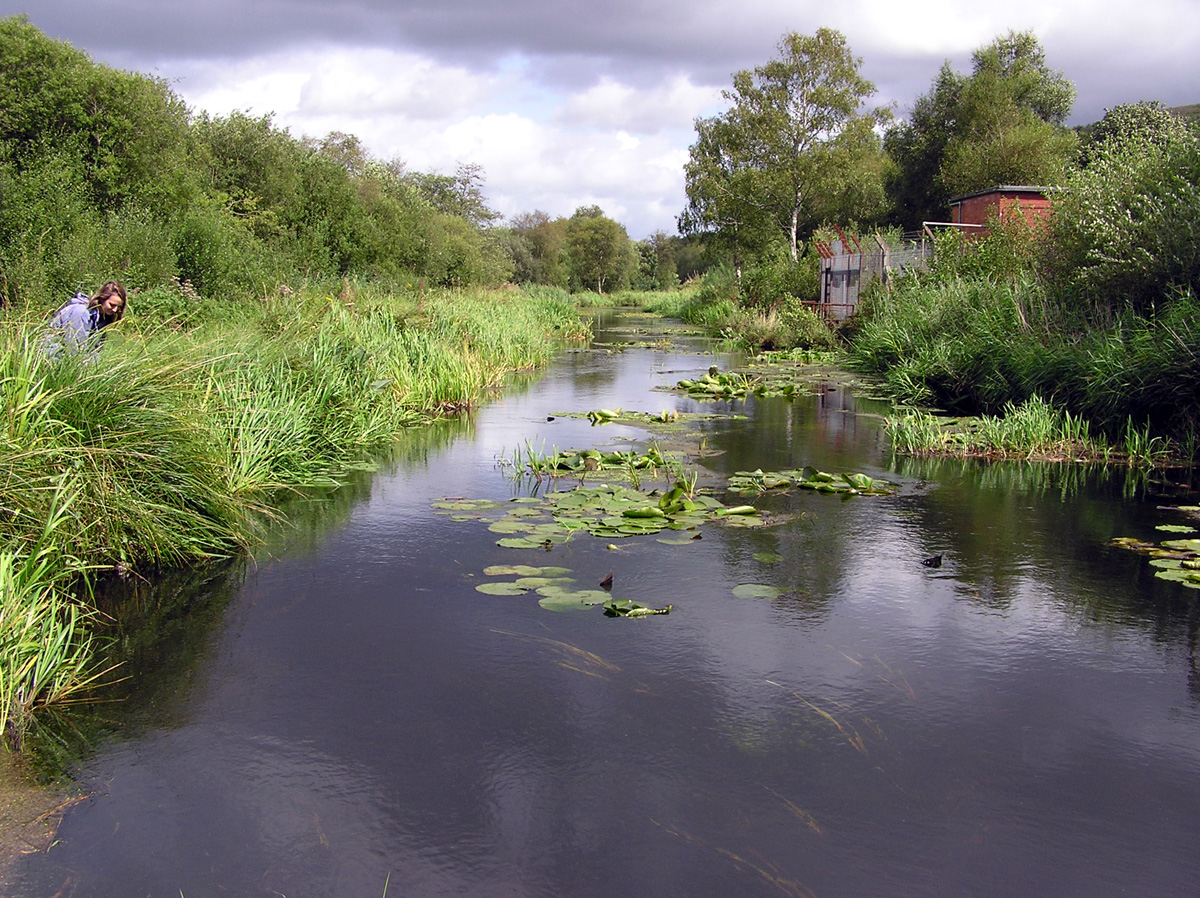
In May 2003 Dolomedes plantarius was discovered along a short section of the bank of the Tennant Canal where it forms the southern boundary of Pant-y-Sais National Nature Reserve (NNR), east of Swansea. In common with the English sites, this is a lowland water body fed by neutral to alkaline, base-rich water. Its important biodiversity is recognised in its designation as a Site of Importance for Nature Conservation (SINC 226).
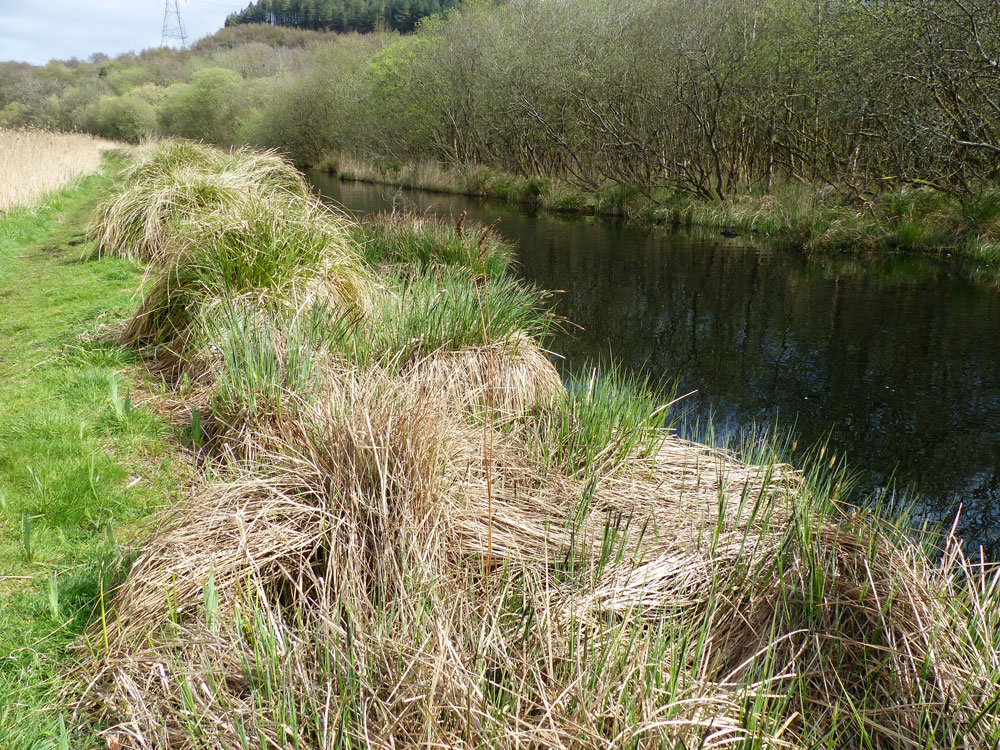
Open, stiff-leaved tussocks of Carex paniculata Tussock Sedge provide one of the main structures for nursery-web construction although webs are also found in other species including the less robust Glyceria maxima Reed Sweet-grass. Surveys show that the spiders occur along around 2.5km of the canal although densities are low and numbers appear to vary considerably between years.
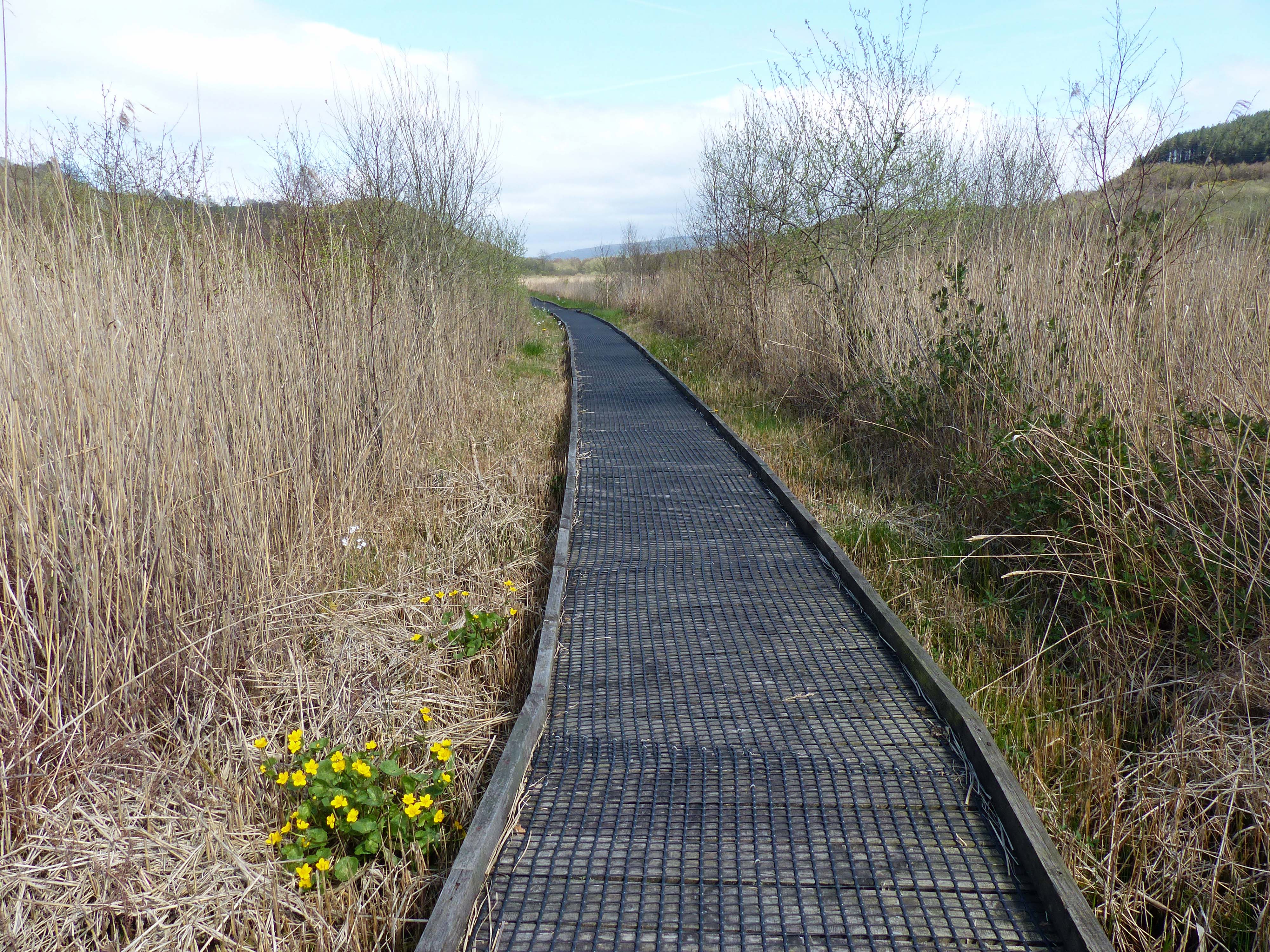
The spiders appear to be much less abundant in what appears to be very suitable fen vegetation in parts of the immediately adjacent Pant-y-Sais National Nature Reserve. This is probably because, although they breed successfully there in some years, their population is limited by the very small number of turf ponds deep enough to hold water throughout dry summers.
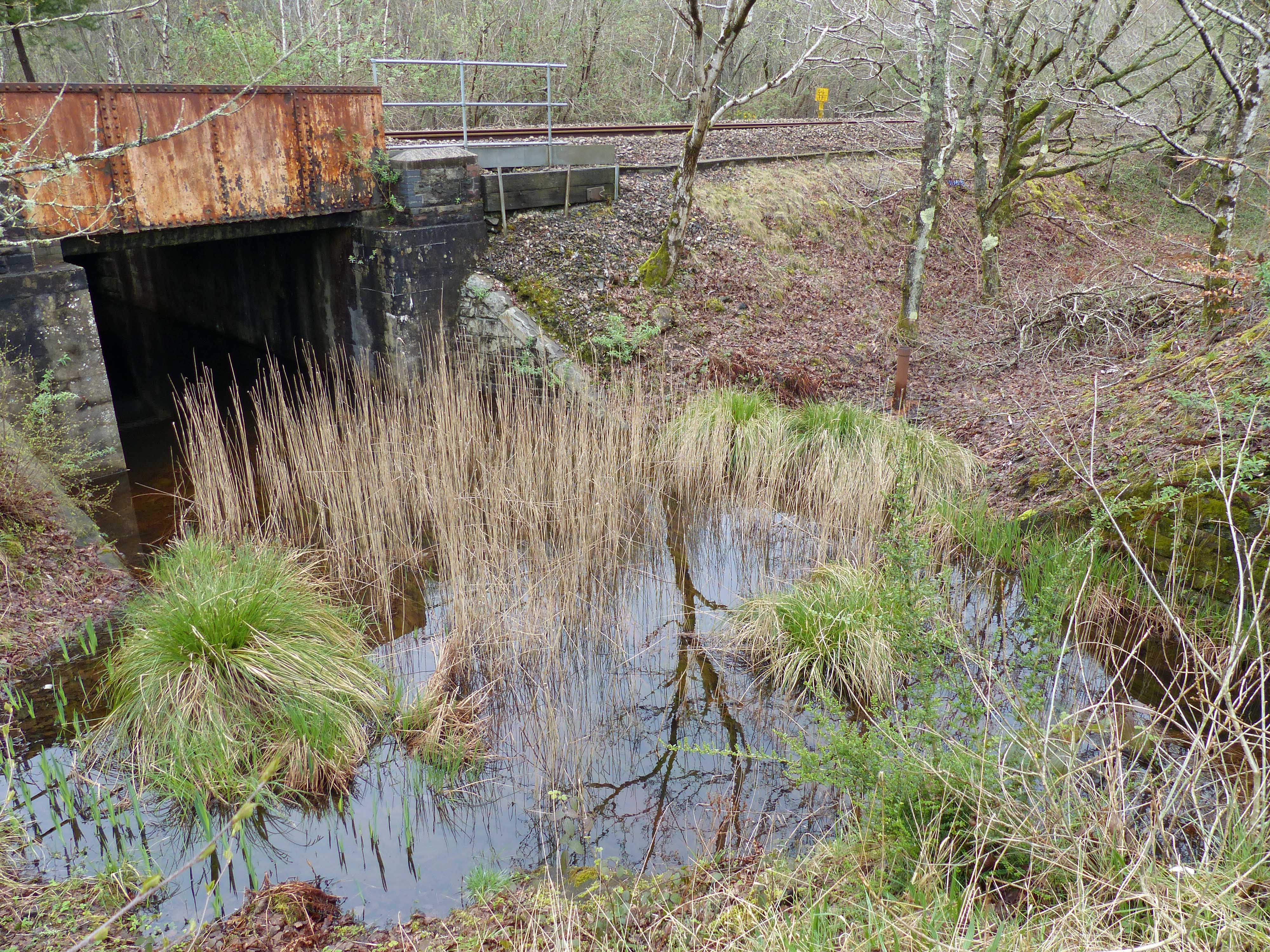
The Wildlife Trust of South & West Wales' Red Jacket Fen nature reserve, adjoining the canal a little further to the east, also has occasional records of D. plantarius. However, a lack of regular and systematic survey means that the extent or permanence of any population there remains unclear.
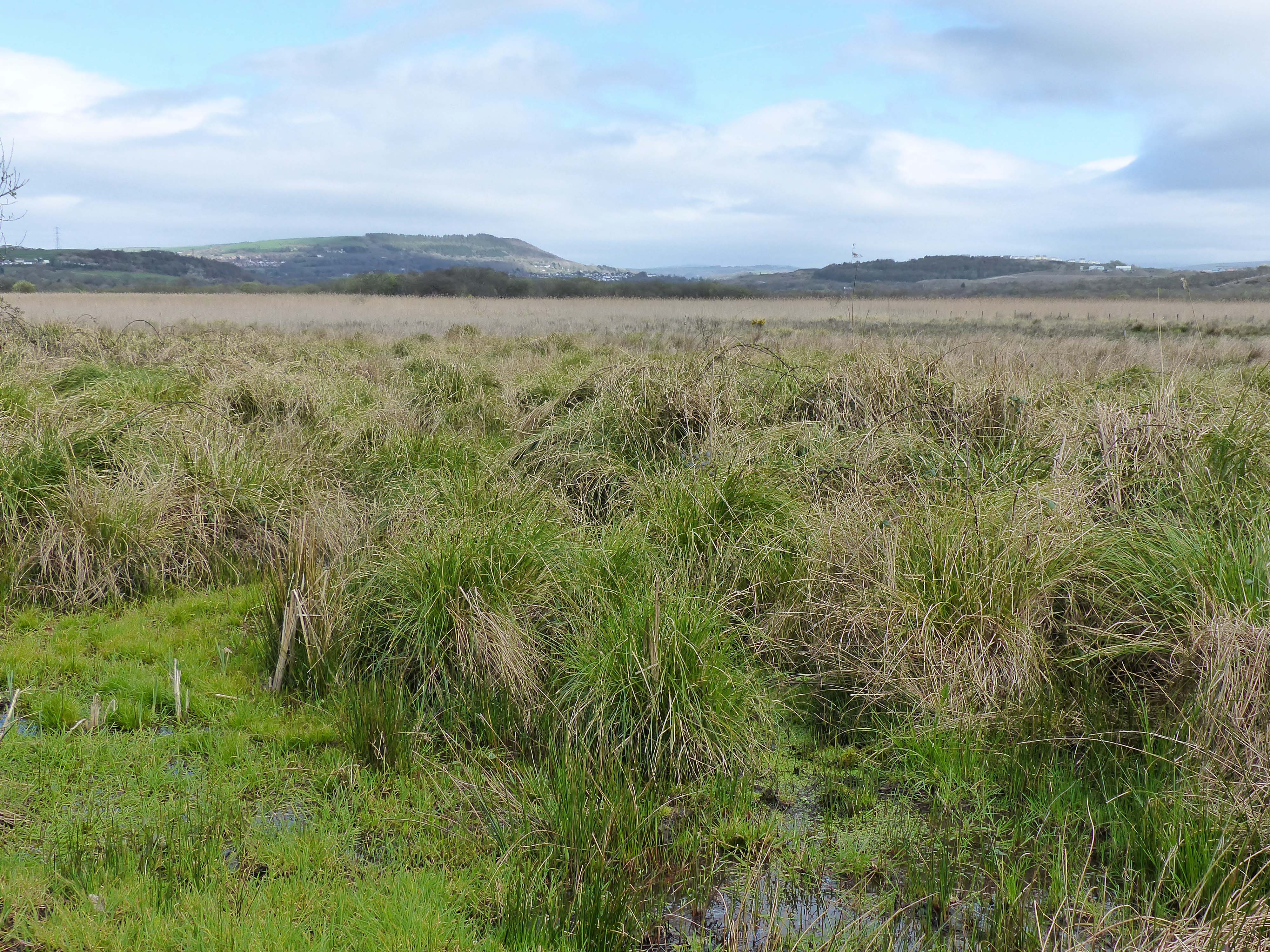
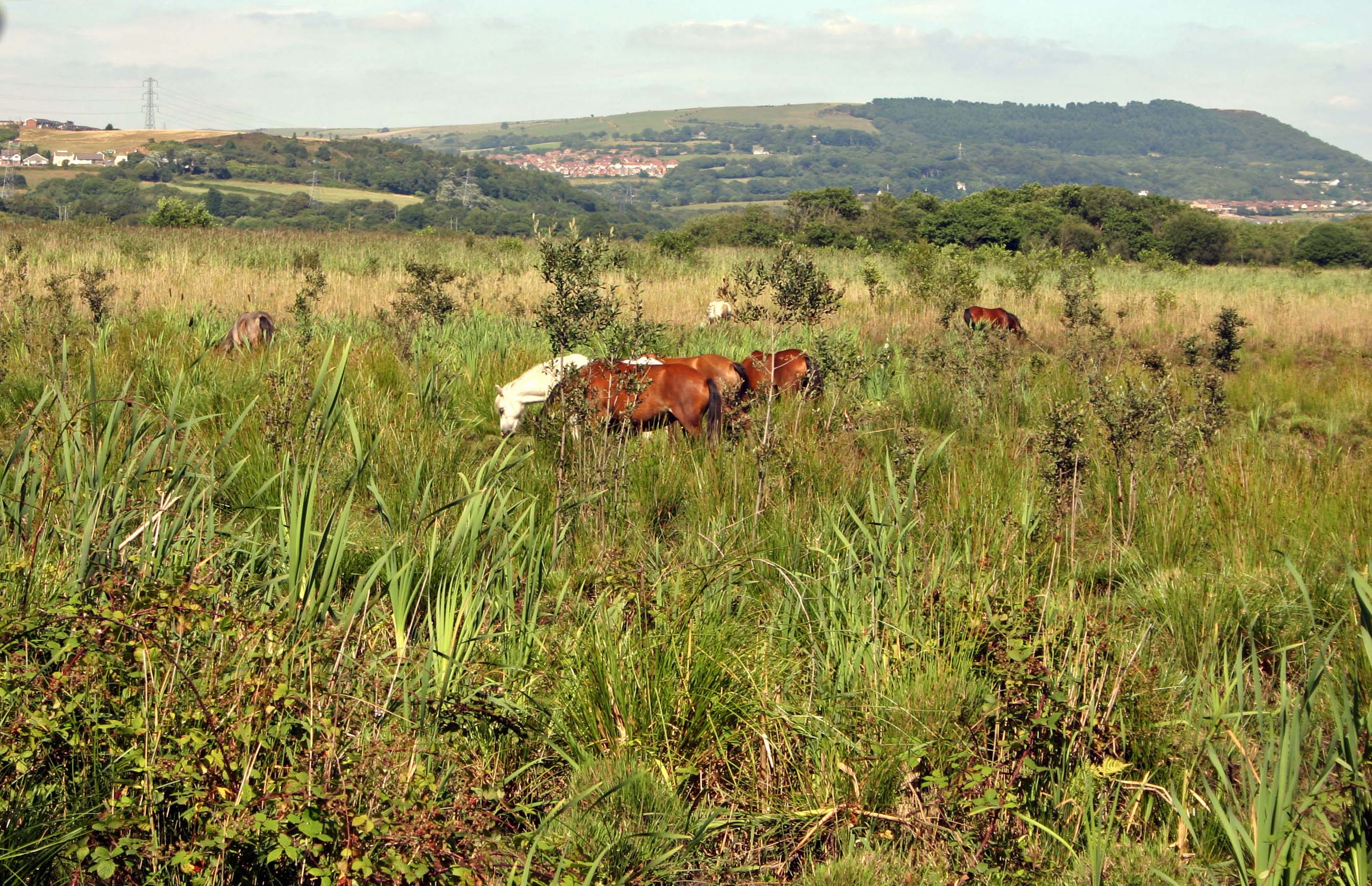
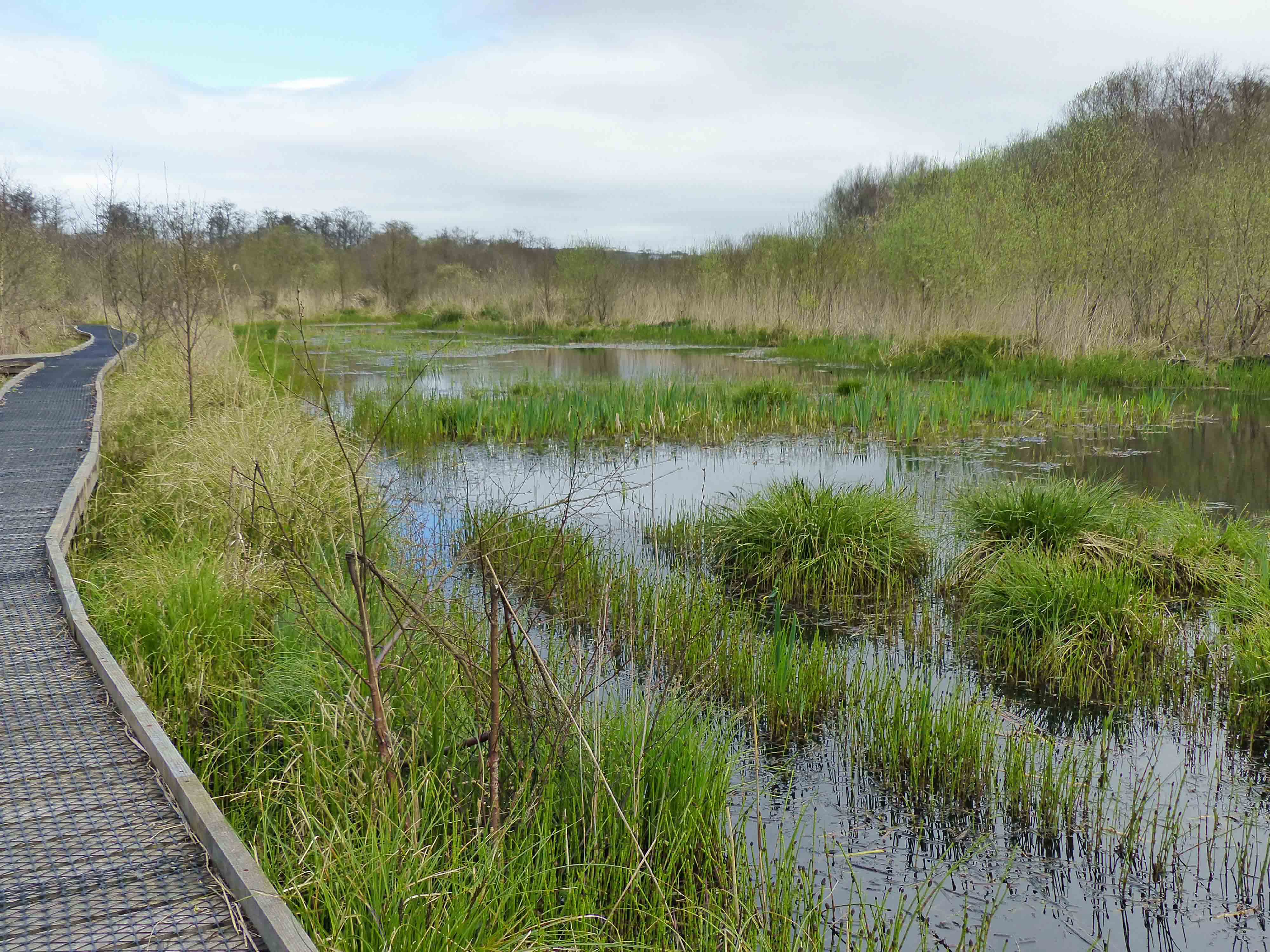
Dolomedes plantarius also occurs in Crymlyn Bog NNR (Robertson 2000) further west along the course of the Canal, and linked to it by the Glan-y-Wern Canal which runs north through the Bog. The full extent of the population at this site is not yet known because the depth of wet peat makes survey work both difficult and dangerous. Surveys commissioned by the Countryside Council for Wales (now NRW) in 2003, 2004 and 2006 (Clark & Clark 2003, Clark 2004, Gallon 2007) showed that D. plantarius was present in at least four areas within Crymlyn Bog during this period and it has been searched for, and found, in two of them since then. There is no current evidence of any connectivity of the D. plantarius populations on the Tennant Canal and in the Bog. Crymlyn Bog is undergoing relatively rapid habitat change. Negative changes have included the encroachment of scrub and Phragmites australis Common Reed on formerly open areas of diverse fen vegetation. However, the introduction of pony grazing and clearance of dense areas of scrub to counteract this is starting to reverse these trends, successfully opening-up some areas and restoring a richer and more structurally diverse fen flora. Some more open areas of standing water have been created by excavation.
A survey commissioned by CCW* in 2001 looked unsuccessfully for evidence of D. plantarius in the extensive grazing marsh ditch systems of the Gwent Levels, further east on the coast of South Wales. A search of suitable habitat in Swansea Vale in 2003 was also unproductive (Gallon 2001).
References
Clark, M. & Clark, D. 2003. Baseline survey of the fen raft spider Dolomedes plantarius in Glamorgan. CCW Contract Science Number 603. Countryside Council for Wales*, Glamorgan.
Clark, M. J. 2004. Field notes 2003/04 for Tennant Canal and Crymlyn Bog – Dolomedes
plantarius personal observations. Unpublished report to the Countryside Council for Wales*, Glamorgan.
Gallon, R. C. 2001. Survey of the Gwent Levels wetland reserve for the fen raft spider Dolomedes plantarius. CCW Contract Science Number 489. Countryside Council for Wales*, Glamorgan.
Gallon, R. C. 2007. Monitoring invertebrate features on SSSI's: Fen Raft Spider on Crymlyn Bog & Pant-y-Sais, West Glamorgan. CCW Contract Science Number 787. Countryside Council for Wales*, Glamorgan.
Robertson, J. 2000. Crymlym Bog NNR, Glamorgan. British Wildlife 12: 22-27.
* now Natural resources Wales (NRW)
